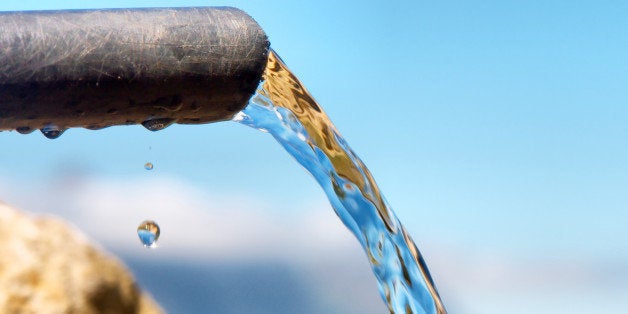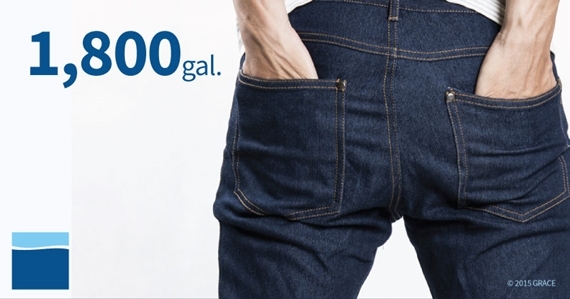
Drought is all over the news. California is at the center of the coverage and rightly so, given the severity of the situation there. But take a look around the rest of the country and the Golden State is not alone.
Washington and Oregon, states many associate with constant drizzle, have alarmingly low snowpack and declared drought emergencies across large portions of their land. Parts of the southern Great Plains are seeing failed wheat crops and dust storms, while southern Florida is experiencing a severe drought. No part of the country is immune to drought, and in fact water managers from 40 U.S. states anticipate at least some form of water shortage within the next 10 years.
For many of us, these current and future water crises mean we need to use water as productively as possible and cut back on waste. But to get there we first need to know how much water we use every day, and most of us have no idea.
GRACE Communications Foundation built the new Water Footprint Calculator to help people figure out how much water they use through a series of simple questions about their daily routines. The calculator accounts for not just how much water we use from the tap, but also the water it takes to produce the food we eat, the energy we use and the products we buy. This is called "virtual water," and it is by far the biggest part of our water footprint.
The almond and its surprisingly large water footprint (one gallon - per nut!), has recently become the poster child for virtual water, but this world of hidden water is far bigger than thirsty almond groves. Consider these surprising numbers on the unseen water in everyday items:
- A single avocado uses 60 gallons of water to grow
- One cell phone takes 240 gallons to manufacture
- It takes 713 gallons to produce one cotton t-shirt
- A hamburger uses 660 gallons of water to make
- One gallon of gasoline takes three-to-six gallons of water to produce
When Governor Brown signed his executive order calling for less lawn watering and other cutbacks to Californians' home water use, it was another example of how we often address water shortages: Namely, cutting back on the water that pours out of our garden hoses, showerheads and faucets. These are certainly important changes that have an immediate impact on the crisis at hand. But according to the Water Footprint Calculator, the typical American uses about 2,200 gallons of water per day, and virtual water use makes up the vast majority of this water footprint.
Addressing our virtual water use is the real opportunity to make our communities more resilient to drought and other extreme weather events, although this requires us to think longer term. While turning off the tap as you brush our teeth will immediately save a gallon or two, skipping one hamburger is not going to put 660 gallons in your local reservoir. We need to think of the big picture and in creative ways. Choosing pasture-raised instead of industrially produced meat, for example, will support farmers who don't rely largely on feed grains irrigated with limited groundwater or surface water supplies. Investing in energy efficiency or even renewable energy at home will help reduce our need for water-dependent power plants. Avoiding "fast fashion" clothing brands and instead buying vintage or well-made and long-lasting pieces will reduce how much water is required to grow cotton and manufacture your clothes.
These are just a handful of many individual choices that can help us use less water, and collectively, they all send a signal to those who make what we use and the products we buy that we want a more sustainable future.
Water is indeed everywhere, but it is also needed to do just about anything. The important first step that we can all take right now is to find out how much water we really use. The daily choices we make to waste less water today, whether directly through the tap or virtually through our food, energy and shopping habits, can help us make sure that there's enough for all of us now and in the future.
